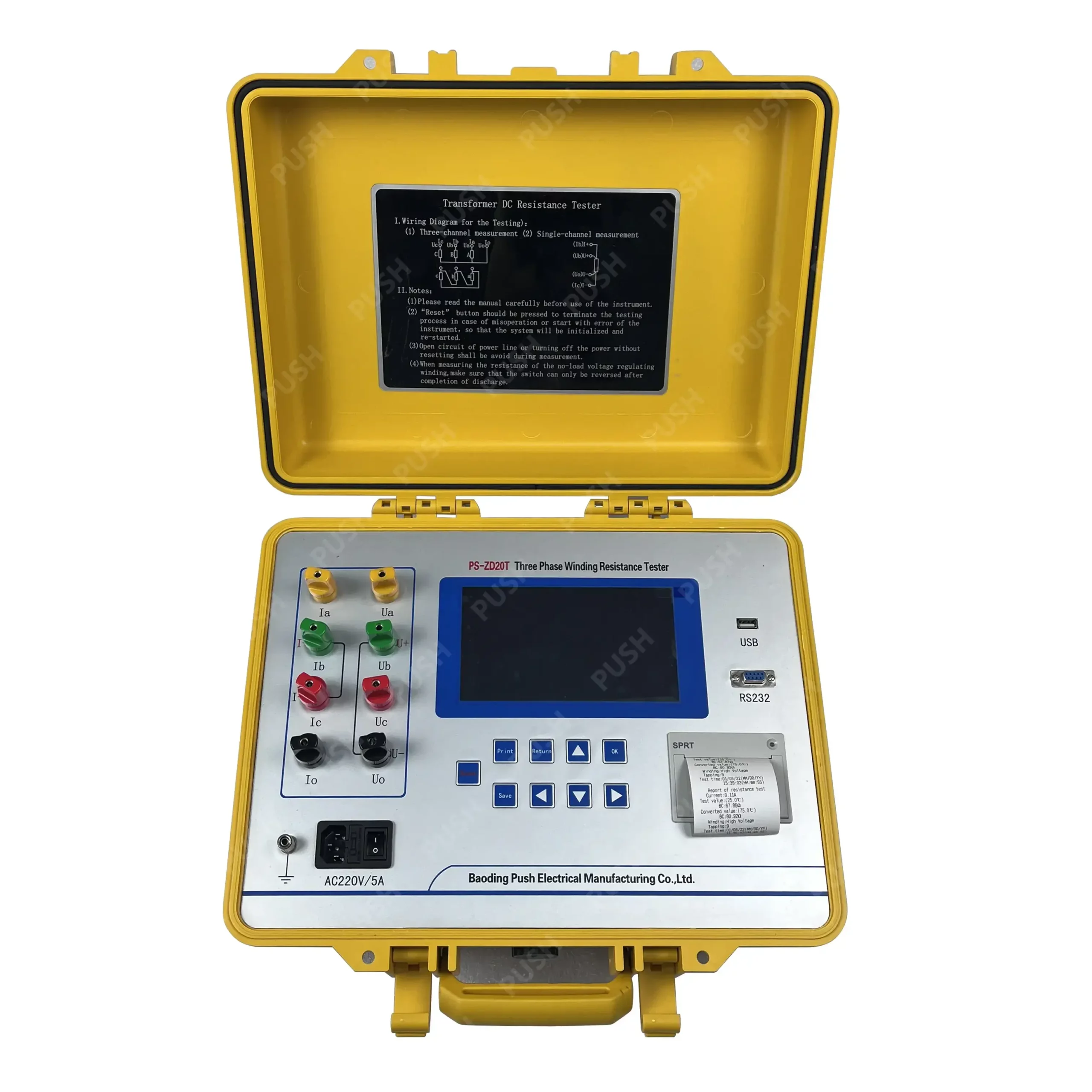A DC resistance tester assists in identifying potential transformer winding imbalance by measuring the resistance of individual windings and comparing the results.
Here’s how it helps in this process:
- Quantitative Measurement: A DC resistance tester provides quantitative measurements of the resistance of each winding in the transformer. By accurately measuring the resistance of individual windings, the tester allows for precise assessment and comparison of the resistance values.
- Identification of Imbalance: Winding imbalance occurs when there are differences in the resistance of the windings within a transformer. These differences can result from variations in wire gauge, winding tension, or manufacturing defects. A DC resistance tester can identify winding imbalance by detecting significant differences in resistance values between windings.
- Diagnosis of Potential Issues: Significant differences in winding resistance values may indicate potential issues such as shorted turns, open circuits, or insulation degradation in one or more windings. By identifying these differences, the tester helps diagnose potential problems that could affect transformer performance or reliability.
- Assessment of Winding Quality: Winding imbalance can be indicative of poor winding quality or manufacturing defects. By assessing the consistency of resistance values across windings, the DC resistance tester provides insights into the quality and integrity of the winding construction.
- Prevention of Overheating: Imbalanced windings can lead to uneven current distribution and localized overheating, which can degrade insulation and reduce transformer lifespan. By identifying winding imbalance early, the tester helps prevent overheating and potential failures by allowing for timely corrective actions.
- Optimization of Transformer Design: Understanding winding imbalance allows for optimization of transformer design to minimize losses,dc resistance tester improve efficiency, and enhance performance. By identifying areas of imbalance, designers can implement measures to mitigate the effects of imbalance and optimize winding construction.
- Compliance with Standards: Many industry standards and specifications require the assessment of winding resistance and balance as part of transformer testing and quality assurance processes. Using a DC resistance tester ensures compliance with these standards and provides documentation of testing results for regulatory purposes.
Overall, a DC resistance tester assists in identifying potential transformer winding imbalance by providing quantitative measurements, identifying issues, diagnosing problems, assessing winding quality, preventing overheating, optimizing transformer design, and ensuring compliance with standards. Incorporating DC resistance testing into transformer maintenance and quality assurance programs enhances the reliability, efficiency, and safety of transformers in electrical power systems.
